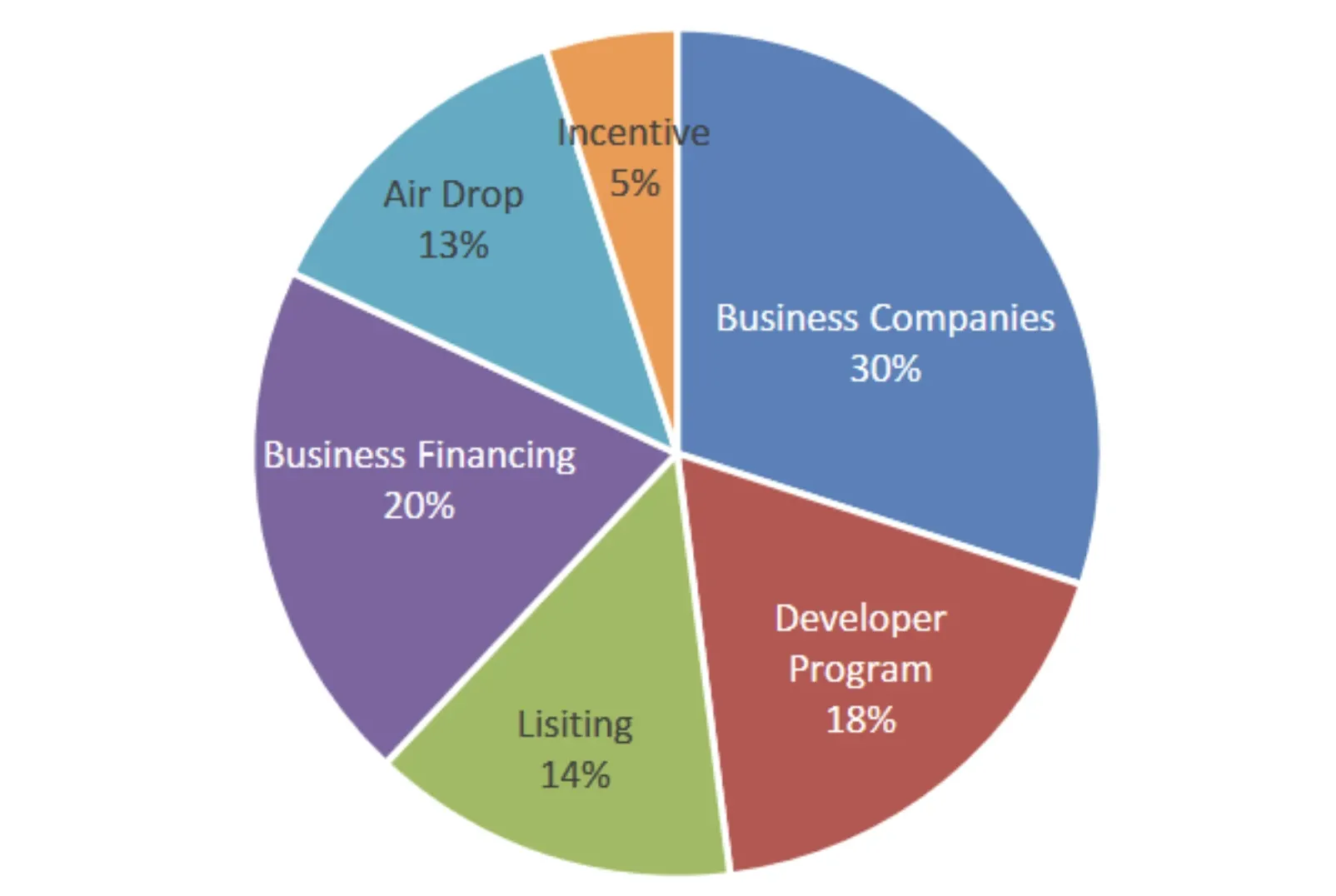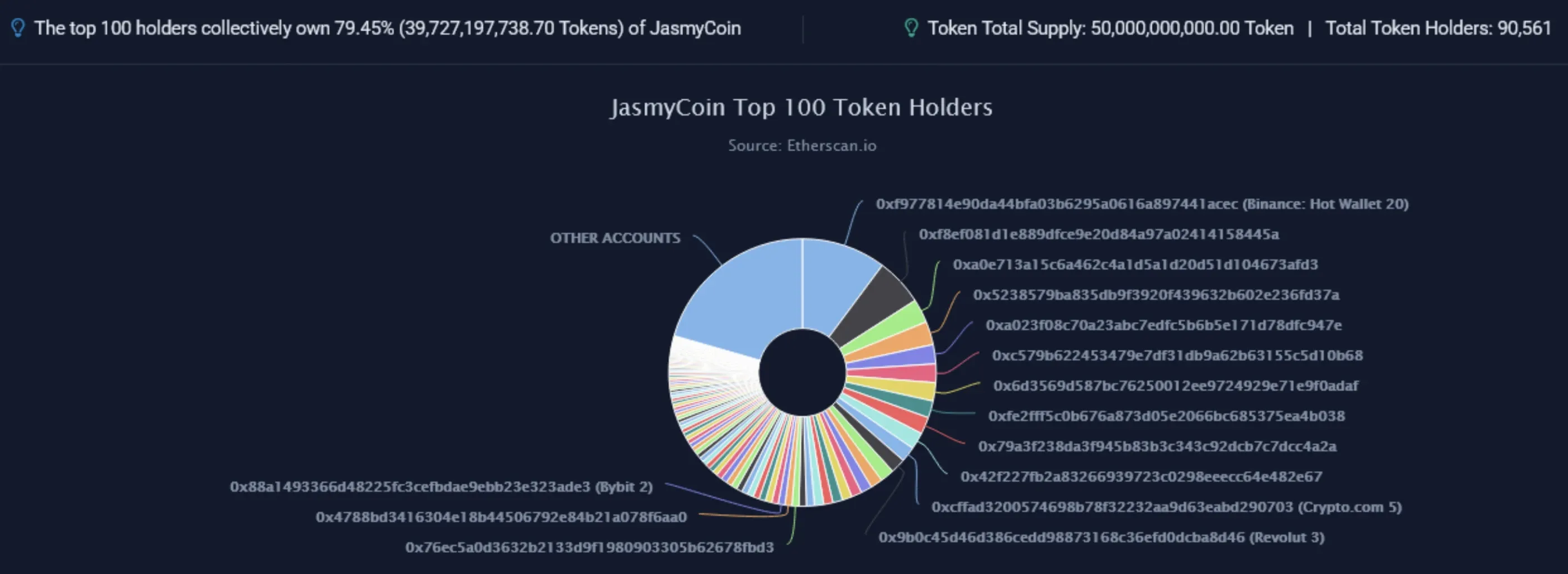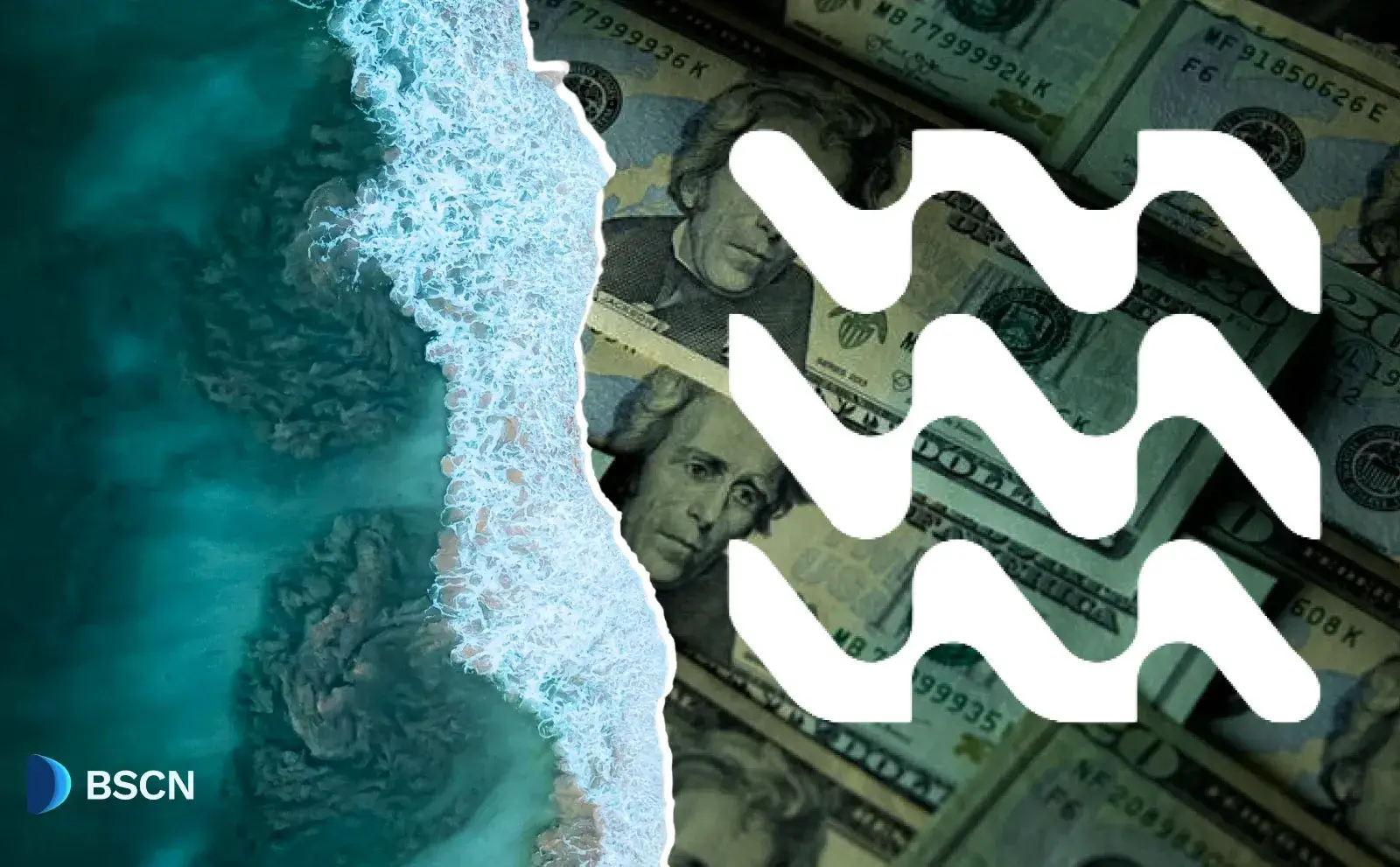Review
(Advertisement)
Jasmy’s JASMY Token Analysis: Japan’s Best Crypto?

JasmyCoin (JASMY) puts data control back in users' hands. This analysis examines JASMY's tokenomics, utility, and technical features as of March 2025.
Crypto Rich
April 1, 2025
(Advertisement)
Table of Contents
JasmyCoin (JASMY) presents itself as "Japan's Bitcoin" — a bold ERC-20 token trying to revolutionize how we control and monetize personal data in an increasingly connected world. But with major tech companies already dominating the data economy, can this Japanese crypto project deliver on its promises? This review dissects JASMY's tokenomics, utility framework, and technical implementation.
JASMY Tokenomics at a Glance
The foundation of any cryptocurrency analysis starts with understanding its supply and distribution mechanics.
Supply Details
JASMY has a total supply capped at 50 billion tokens, with approximately 49.45 billion currently in circulation.
The JASMY smart contract was deployed in December 2019 and later received security verification through an audit by blockchain security firm SlowMist.
According to data from Jasmy's whitepaper, the initial token allocation followed this structure:
- 30% allocated to Business Companies
- 20% for Business Financing
- 18% for the Developer Program
- 14% for Listing
- 13% for AirDrop
- 5% reserved for Incentives

Distribution Analysis
Unlike many cryptocurrency projects from its era, Jasmy did not launch through an Initial Coin Offering (ICO). This approach allowed Jasmy to avoid the regulatory scrutiny that plagued many ICO-launched tokens, particularly important given Japan's strict cryptocurrency regulations. By choosing a more traditional corporate rollout, Jasmy positioned itself with greater legitimacy in the Japanese market, where compliance with financial regulations is particularly stringent.
Currently, there are approximately 90,500 token holders, with 46 addresses holding over 0.5% of the supply. The largest holder is the Binance hot wallet, which has 10.8%. The top 100 wallets combined hold 79.45% of the supply, of which many are exchange wallets holding the tokens of their users.

Utility and Use Cases
Understanding what drives demand for a token helps assess its long-term value proposition.
Core Functions: Data Democracy in Action
Within the Jasmy ecosystem, the token functions as the currency for a new "data democracy" with three interconnected roles:
- Data Transaction Medium: When IoT devices generate valuable user data, JASMY tokens facilitate payment between data buyers (companies seeking consumer insights) and individual data owners. This creates a direct monetization channel that bypasses traditional data aggregators.
- Platform Access: JASMY tokens serve as keys to the ecosystem's data lockers ("Personal Data Lockers" or PDLs), where users can securely store and manage access to their personal information. Higher token holdings can unlock enhanced storage capacity and security features.
- Participation Incentives: The ecosystem distributes JASMY tokens to reward users who contribute high-quality data or participate in network governance decisions, creating a positive feedback loop for engagement.
These mechanisms work together to enable what Jasmy calls a "data democracy," where individuals maintain sovereignty over their information while gaining compensation when businesses want access.
Technical Architecture: Bridging Enterprise and Public Blockchains
Unlike the main Jasmy Platform, which operates on Hyperledger Fabric (an enterprise blockchain solution), JASMY tokens exist exclusively on the Ethereum blockchain as ERC-20 tokens. This deliberate dual-architecture approach serves a strategic purpose:
The Hyperledger Fabric implementation provides the privacy, scalability, and customization needed for enterprise-grade data management. This appeals to conservative Japanese corporations that require regulatory compliance and data protection guarantees.
Meanwhile, the Ethereum-based JASMY token creates accessibility for global users and liquidity through public cryptocurrency markets. This public-facing component enables wider adoption beyond enterprise partnerships.
This technical bridge connects Jasmy's enterprise solutions with the public cryptocurrency ecosystem, allowing the project to operate in both worlds simultaneously — a unique positioning in the data management space.
Real-World Applications
Jasmy has secured partnerships with established technology companies, including Panasonic, VAIO, and Transcosmos, suggesting practical IoT integration possibilities. Recent developments point to a focus on scalability and interoperability:
- Cross-chain compatibility (Base) via Chainlink CCIP (Cross-Chain Interoperability Protocol), announced March 13, 2025
- Layer 2 solution adoption through Janction to address Ethereum's scaling limitations
Conclusion: Japan's Data Sovereignty Pioneer Faces Critical Juncture
With Jasmy’s technical foundation established and partnerships in place, 2025 represents a critical implementation year when theoretical advantages must translate into measurable adoption.
The project offers a distinctly Japanese approach to the growing data sovereignty movement, combining corporate partnerships, regulatory compliance, and blockchain innovation into a potentially viable alternative to Big Tech's dominant data harvesting models.
For the token to succeed where many others have failed, Jasmy must demonstrate that everyday users genuinely value and will actively participate in a data democracy. This remains the project's most significant challenge and opportunity.
For more information, you can follow their progress on X.
Read Next...
Disclaimer
Disclaimer: The views expressed in this article do not necessarily represent the views of BSCN. The information provided in this article is for educational and entertainment purposes only and should not be construed as investment advice, or advice of any kind. BSCN assumes no responsibility for any investment decisions made based on the information provided in this article. If you believe that the article should be amended, please reach out to the BSCN team by emailing [email protected].
Author
 Crypto Rich
Crypto RichRich has been researching cryptocurrency and blockchain technology for eight years and has served as a senior analyst at BSCN since its founding in 2020. He focuses on fundamental analysis of early-stage crypto projects and tokens and has published in-depth research reports on over 200 emerging protocols. Rich also writes about broader technology and scientific trends and maintains active involvement in the crypto community through X/Twitter Spaces, and leading industry events.
(Advertisement)
Latest News
(Advertisement)
Crypto Project & Token Reviews
Project & Token Reviews
Comprehensive reviews of crypto's most interesting projects and assets
Learn about the hottest projects & tokens














